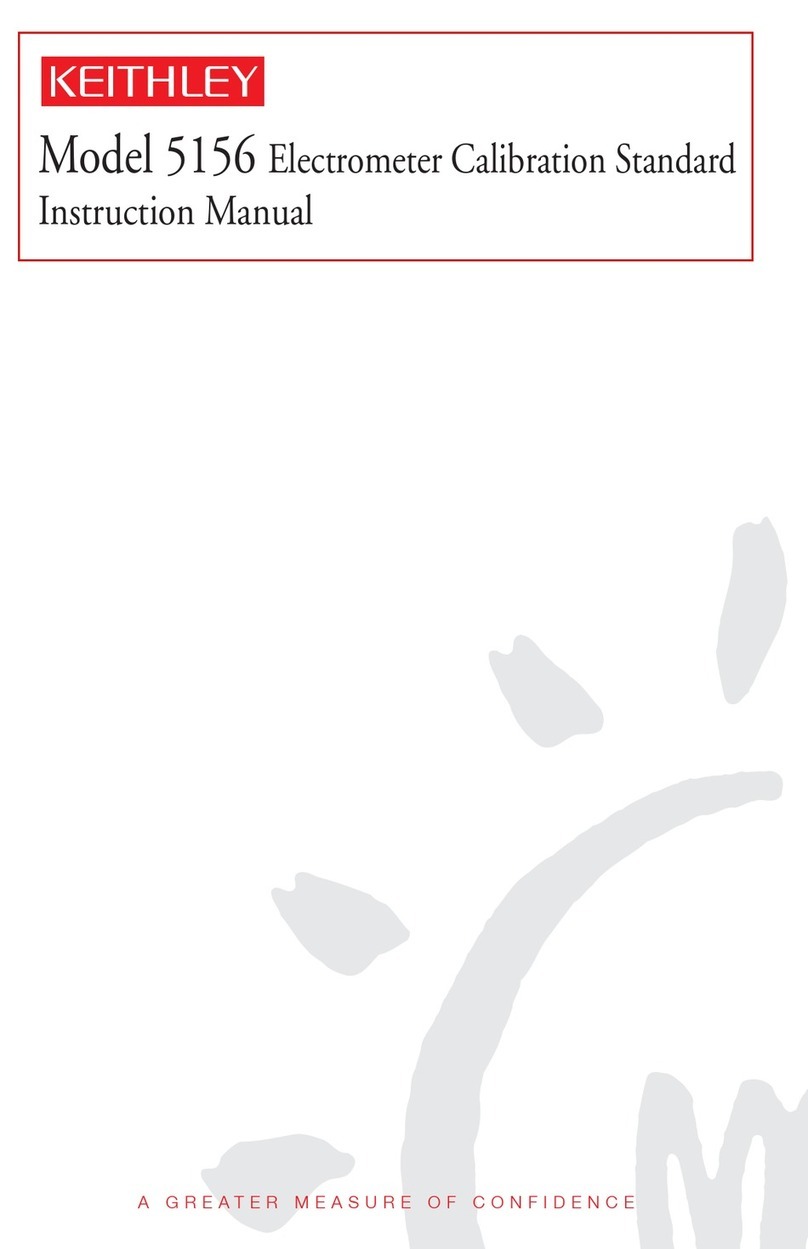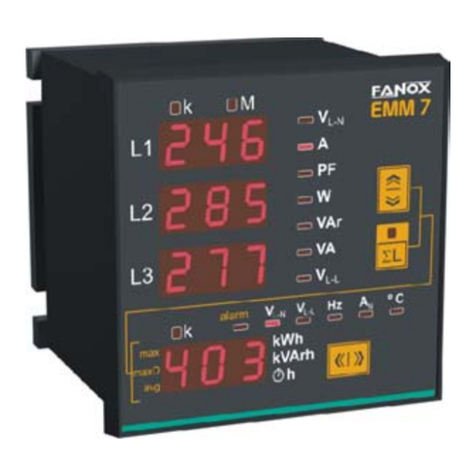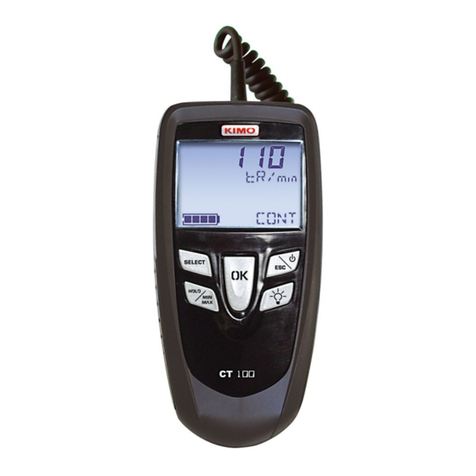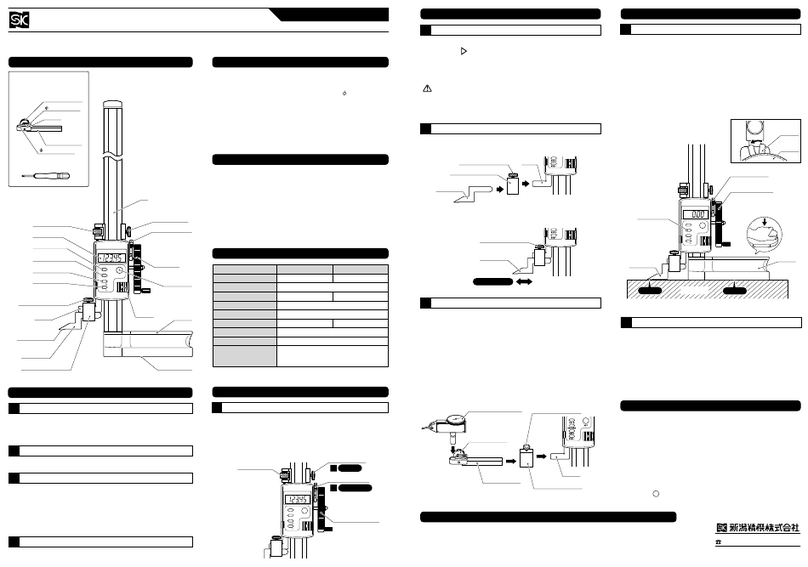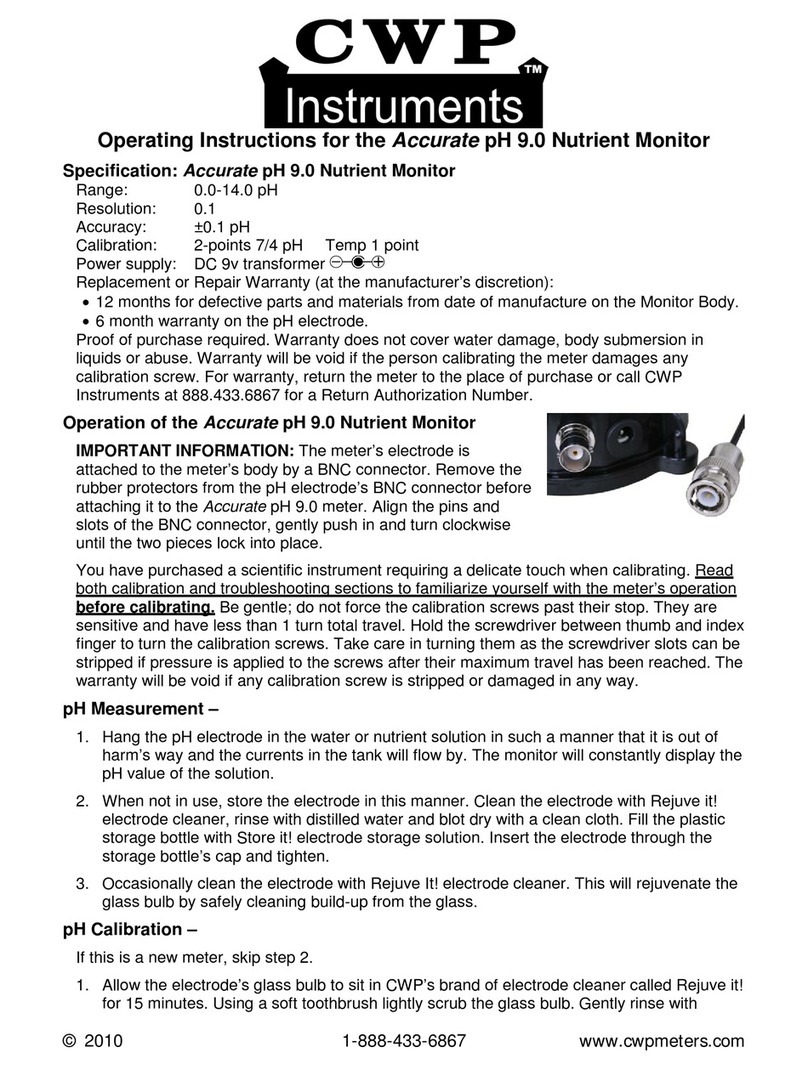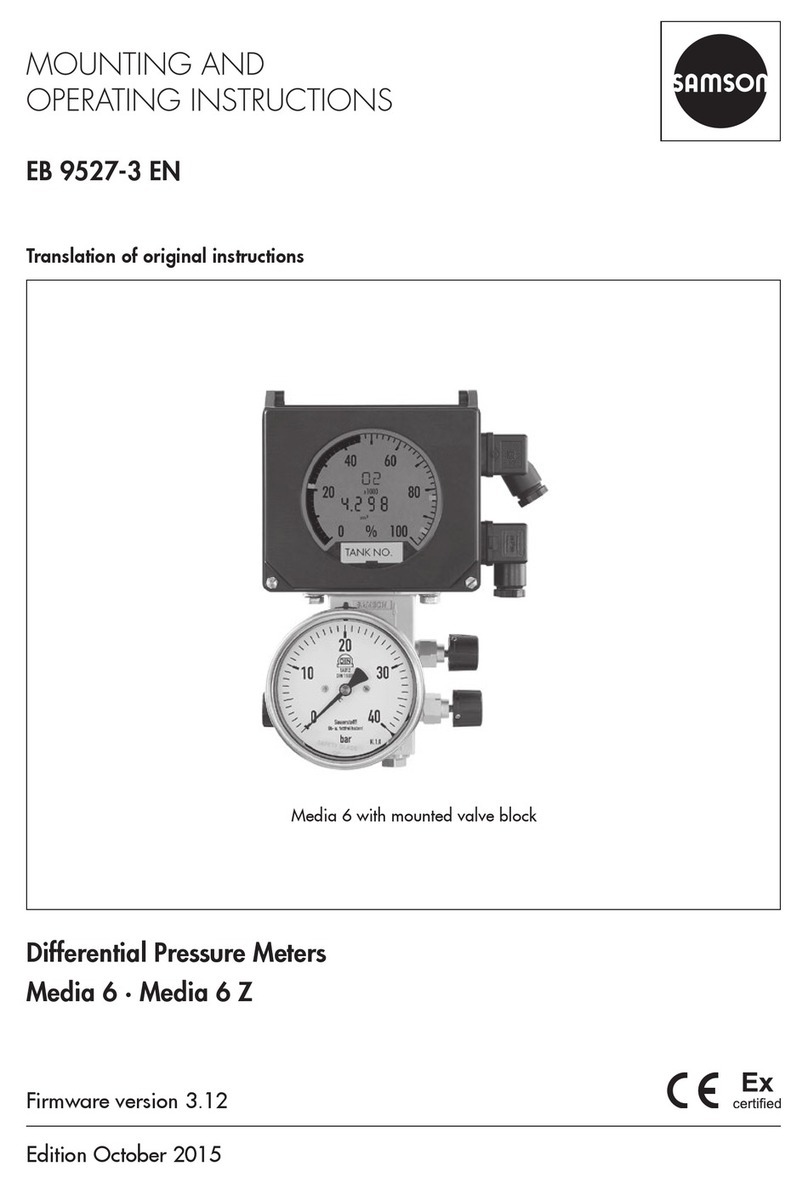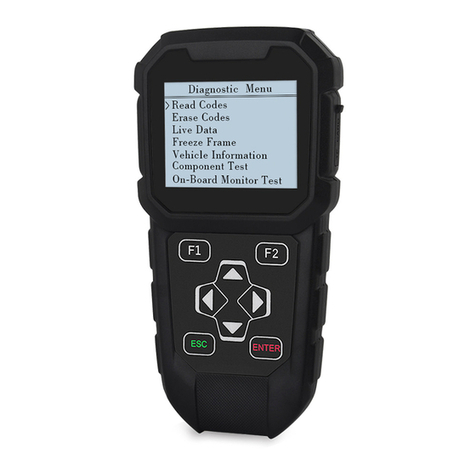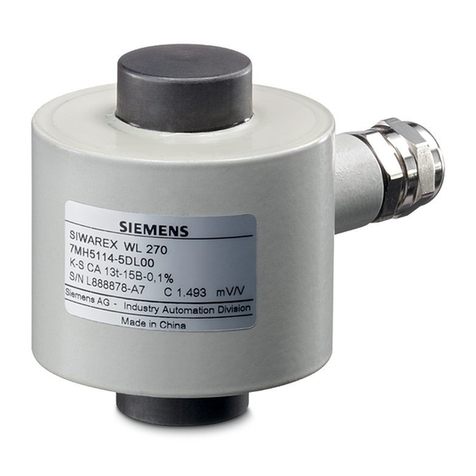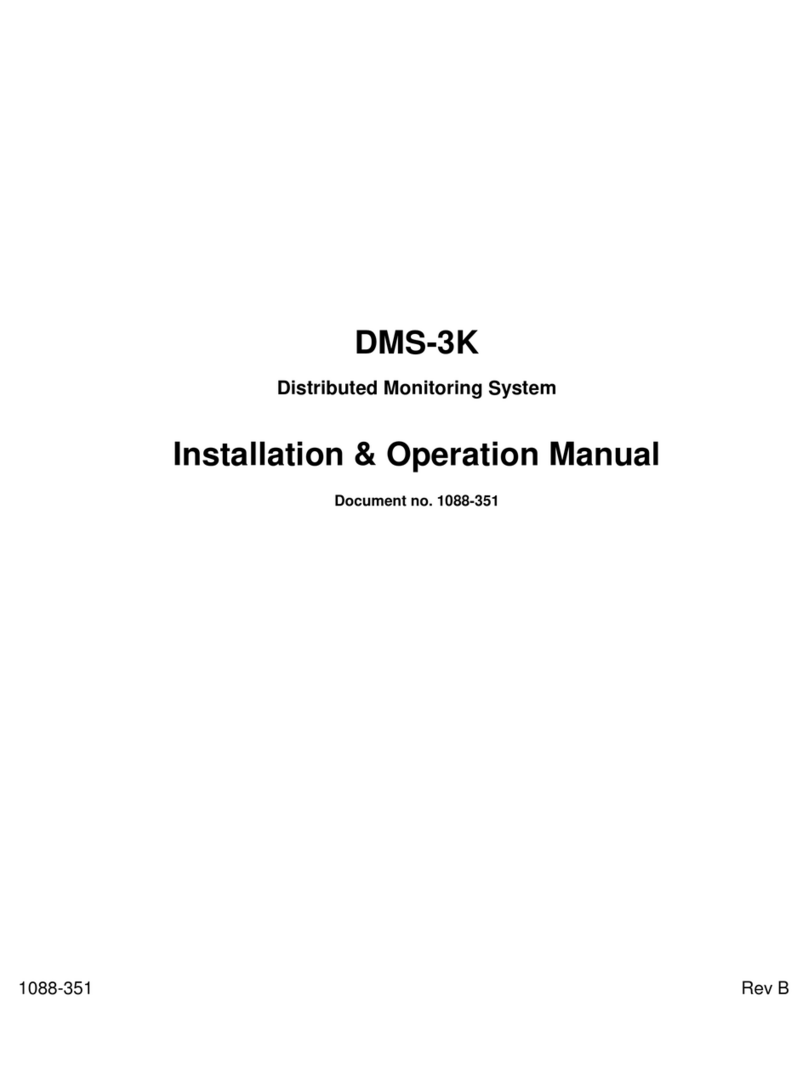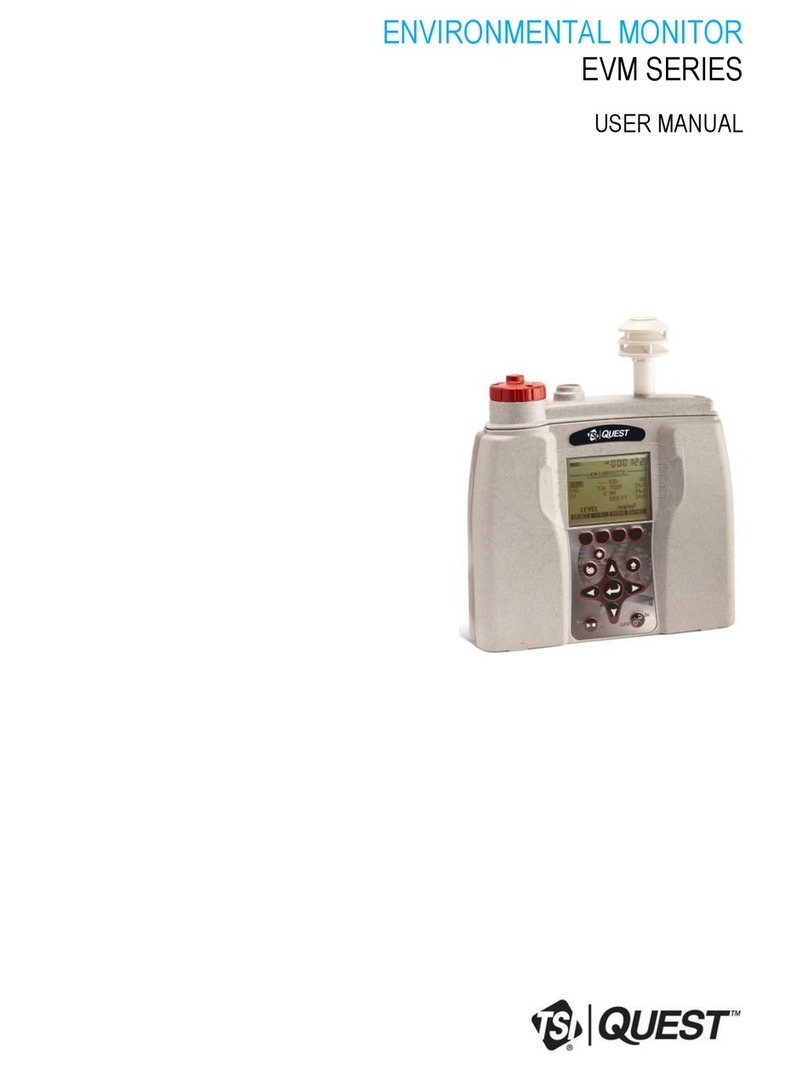Entes MPR-3 Series User manual

1
Network Anayzer
User Manual
MPR-3
Series
www.entes.eu

2
SAFETY AND WARNING ...................................................................................................3
Attention........................................................................................................................3
Safety............................................................................................................................3
Guarantee ....................................................................................................................3
OPERATING CONDITIONS ...............................................................................................4
INTRODUCTION................................................................................................................5
General Specications ..................................................................................................5
Applications...................................................................................................................6
MPR-3 Product Family..................................................................................................7
Appearance and Interface.............................................................................................7
Terminal Structures .......................................................................................................7
Front Panel....................................................................................................................9
Button Functions .........................................................................................................10
CONNECTION TYPES.....................................................................................................10
3P4W (Three-Phase Four-Wire) Connection.............................................................11
3P3W (Three-Phase Three-Wire) Connection........................................................... 11
ARON Connection.......................................................................................................11
3P4W BLN (Three-Phase Four-Wire Balanced) Connection......................................12
3P4W BLN (Three-Phase Three-Wire Balanced) Connection....................................12
Connection Control .....................................................................................................12
Communication Line Termination Resistance ............................................................13
OPERATING DEVICE ......................................................................................................13
Measurement Screens................................................................................................13
Current, Voltage and Frequency Screens ...................................................................14
Power and Power Factor Screens ..............................................................................15
Energy and Harmonic Screens ...................................................................................17
Minimum, Maximum and Demand Screens ...............................................................19
Screen Setting..................................................................................................................24
Installation Settings of the Device...............................................................................24
Display Settings ..........................................................................................................28
Time Settings ..............................................................................................................30
RS-485 Communication Settings................................................................................32
Input Parameter Settings ............................................................................................34
Output Parameter Settings..........................................................................................34
Pulse Output Settings .................................................................................................35
Operating Hours Settings............................................................................................38
Alarm Settings.............................................................................................................39
Reset Settings.............................................................................................................42
System Settings ..........................................................................................................45
Reading Records via Modbus.....................................................................................47
Reporting Screen ........................................................................................................47
TECHNICAL INFORMATION AND ATTACHMENTS........................................................49
Technical Information ..................................................................................................49
IEC 61557-12 Properties.............................................................................................50
Compliance with the Standards ..................................................................................51
Program Menu Map ....................................................................................................52
INDEX

3
SAFETY AND WARNING
Attention
Failure to follow the instructions below may result in death or serious injury.
• Please, cut all power before connecting the device.
• Do not connect the current measurement inputs directly to the current source. Always
connect the current source using a current transformer.
• Once the device is energized, do not remove the front panel.
• Do not attempt to clean the device with a solvent or another similar agent. Use only a dry
piece of cloth.
• Check the correct connections before energizing the device.
• Contact your authorized seller in case of any problems with your device.
• Device is only for panel mounting.
• F Type fuse must be used and its current limit must be 1 A.
• Current measurement inputs must be connected with auxiliary current transformers which
have reinforced insulation.
• The power meter shall not be used for primary protection or applications where its failure
can cause harm or death.
• Please de-energize the device before replacing RTC backup. It must be Li / MnO2 battery.
The manufacturing company is not responsible for the consequences resulting from failure to
comply with these precautions.
Safety
Please, read the entire operating manual before using the device.
•
Connect a button or a circuit breaker between the mains and the supply inputs of the device.
• The button or circuit breaker to be connected should be close to the device.
• It should be labeled that the button or circuit breaker to be connected will be used for
seperating the device from the mains.
Guarantee
The guarantee term of the device is 2 (two) years. In case of any problem, the repair of
the device must be done only by the manufacturer rm; otherwise, the guarantee of the
device becomes invalid.

4
OPERATING CONDITIONS
Operating Conditions Value Range
Operating Voltage 95 ~ 270 VAC/DC
Frequency Range 50 ~ 60 ± %10 Hz
Maximum Measured Current 5.5 A
Maximum Measured Voltage 300 VAC (L-N) / 480 VAC (L-L)
Operating Temperature Range -10 ~ +70 ºC
Storage Temperature Range -20 ~ +80 ºC
Maximum Ambient Humidity 95%
Communication Speed 2400 ~ 115200 bps

5
INTRODUCTION
General Specications
• Wide supply voltage range (95-270 VAC/DC ± %10)
• Custom FSTN display with backlight
• 3 voltage measurement input
• 3 current measurement input
• 4 dierent language options
• 1 MB Internal Memory
• Real time clock
• Alarm
• Time counters ( Operating time and overall tiime)
• Communication through RS-485 (Modbus)
• Measured parameters:
o Current
o Neutral Current
o Voltage (Phase-Phase, Phase-Neutral)
o Active, Reactive and Apparent Power
o Frequency
o Active Energy
o Reactive Energy
o Apparent Energy
o Cos φ
o Power Factor
o Total Active Power
o Total Reactive Power
o Total Apparent Power
o Total Cos φ
o Total Power Factor
o Total Harmonic Distortion for Current ( % THD-I)
o Total Harmonic Distortion for Phase-Phase Voltages ( % THD-VLL)
o Total Harmonic Distortion for Phase-Neutral Voltages ( % THD-VLN)
Instant minimum and maximum measured parameters:
o Current
o Phase-Phase Voltage
o Phase-Neutral Voltage
o Active Power
o Reactive Power
o Apparent Power
o Frequency
o Total Harmonic Distortion for Current ( % THD-I)
o Total Harmonic Distortion for Phase-Phase Voltages ( % THD-VLL)
o Total Harmonic Distortion for Phase-Neutral Voltages ( % THD-VLN)
Demand and Maximum Demand parameters measured by integration time:
o Current
o Active Power
o Apparent Power

6
• Isolated digital input and output
• 72 x 72 panel mounting
• User password
• Changable transformer transformers
• Measurement by 5 dierent connections: 3- phase 4-wire, 3-phase 3-wire, 3-Phase
Aron, 3-phase 4-wire balanced, 3-phase 3- wire balanced
• Adjustable Demand time
• Summer-Winter time application
Applications
MPR-3 series analyzers are 3 phase network analyzers. They are microprocessor-based
devices designed to measure all parameters of an electrical network, calculate consumption
and display them on the LCD screen.
Thanks to the RTC clock chip and ash memory on the device, the operations performed
by the operator such as interruption records, time and setting changes, reset operations are
recorded in real time. These records can be remotely read and monitored with Modbus RTU
protocol over RS-485 communication line.
The current connection is made by connecting to a 1A or 5A secondary current transformer,
depending on the selected model, or to a current transformer with mV voltage output with
RJ-45 connector.
The connection control function should be used against the problem of exposed live ends
that may occur due to possible rupture in the terminals.

7
MPR-3 Product Family
Appearance and Interface
The front view of the device is as follows:
Terminal Structures
MPR-3X Series Rear Panel
Model with Two Inputs Model with One Input and One Output

8
1. Voltage Measuring Input Terminal (4 pin) : L1 L2 L3 ve N
2. 95-270 VAC/DC Supply Input Triple Terminal (2 pin)
3. Digital Input / Output quad Terminal (4 pin)
4. RS-485 triple Terminal (2 pin)
5. Current Measuring Input Terminal (6 pin) : L1 L2 L3
1. Voltage Inputs
V1-> 1. Phase Voltage input
V2-> 2. Phase Voltage input
V3-> 3. Phase Voltage input
N-> Neutral input
2. Supply
Input
Input A1
Input A2
3. Digital Input /
Output
The number of inputs
/ outputs varies
according to the
product model.
IN1 -> Digital Input
IN2 -> Digital Input
OUT1 ->Digital Output
4. RS-485 Input
Input A
Input B
Input GND
5. Current Terminals
K1-> Phase Current input
L1-> Phase Current output
K2-> Phase Current input
L2-> Phase Current output
K3-> Phase Current input
L3-> Phase Current output
MPR-3X-PM Series Rear Panel
1 2
3 4
5
6
1. Voltage Inputs
V1-> 1. Phase Voltage input
V2-> 2. Phase Voltage input
V3-> 3. Phase Voltage input
N-> Neutral input
2. Supply Input
Input A1
Input A2
3. Digital Input / Output
The number of inputs / outputs
varies according to the product
model.
IN1 -> Digital Input
IN2 -> Digital Input
OUT1 -> Digital Output
4. RS-485 Input
Input A
Input B
Input GND
5. Current Terminals
K1-> Phase Current input
L1-> Phase Current output
K2-> Phase Current input
L2-> Phase Current output
K3-> Phase Current input
L3-> Phase Current output
6. Current Terminals 2
Compatible with
current transformers.
!
It should be used with a
current transformer with
100-500 mV output. It is
compatible with ENTES
ENT.CCT type current
transformers.
!Please use the 6 pin terminal input or RJ45 input to measure current. These entries
should not be used at the same time.

9
Front Panel
1 Indicates on which quadrant the network is operating.
2 Indicates that the displayed value is negative.
3 Indicates that the measurement is inductive or capacitive.
4 Indicates that the digital output is active.
5 Indicates that the pulse input is active.
6 Indicates that password is needed to enter the programming menu.
7 Indicates that the RTC is reset and stays on until RTC is adjusted.
8 Indicates that there is a phase sequence error.
9 Indicates that there is a warning
10 Indicates that the alarm output is active.
11 Indicates that the communication is active.
12 Indicates whether the value is CosØ or Power Factor.
13 Indicates the unit of the value (W, kVAr, MVA, etc.).
14 Indicates the measured values of the corresponding screen.
15 Indicates the unit of the energy or the corresponding setting.
16 Indicates energy value or time.
17 Indicates for which tari the energy measurement is.
18 Indicates that the energy value is negative.
19 Indicates the total screen. (i.e. Total powers).
20 Indicates the percent values. (i.e. Harmonics)
21 Indicates that the displayed values are for Total Harmonic Distortion.
22 Indicates L1, L2, L3 and L1-2, L2-3 and L3-1 measurements.
23 Indicates that the corresponding screen is one of Minimum, Maximum, Demand or
Maximum Demand screens.

10
Button Functions
4 buttons are used on the front panel. All the buttons used here can be used for additional
functions other than their main functions which can be accessed by pushing for 3 seconds.
Button function descriptions are as below:
•BACK button (24) : It has 3 basic functions:
• It is used to return to the upper menu from any menu.
• While on measuring screen: As seen from the notation on the button (V I F), Current,
Voltage, Frequency and Time counter is used to monitor values and switch between the
related screens.
• It provides access to event screen when pressed for 3 seconds (Event).
•DOWN button (26) : It has 3 basic functions:
• While on measuring screen: As seen from the notation on the button (P PF), it is used
for monitoring the Total, Active, Reactive, Apparent Power, Cosφ and the values measured
related with the Power Factor.
• While in the menu screens, it is used to move up in the menu and to increase the adjusted
values.
• While on measuring screen: When pressed for 3 seconds, the device swicthes into the
connection test mode (Test).
•UP button (25) : It has 2 basic functions:
• While on measuring screen: As seen from the notation on the button (E H), it is
used for monitoring Harmonic measurements on the Voltage-Current screen and Energy
measurements on the Power screen.
• While in the menu screen, it is used for moving downyards in a menu and decreasing the
adjusted values.
•SET button (27) : It has 3 basic functions:
• While on measuring screen: As seen from the notation on the button (Max / Min), it is
used for monitoring the Maximum, Minimum, Demand and Max Demand measurements of
the related screen while you are on the Voltage-Current and Power screens.
• It provides access to setting screens when pressed for 3 seconds. When the PIN is active,
PIN is requested to enter the Menu and the menu is accessed only if the correct PIN value
is entered.
• It is used to access the setting to be changed and save the changes, if it is required to
make changes on the settings by using the menu steps. It is enough to push the button for
a little while for this process.
CONNECTION TYPES
As there are shunts at the current measurement inputs of the device, it is mandatory to use a
current transformer for the connections of current inputs. If the device will be used with other
analyzers on the same panel, it is recommended that the device is located at the last point on
the current measurement line.
The device has 5 dierent connection types. These connection types are described in the
following schemes:

11
3P4W (Three-Phase Four-Wire) Connection
As it is seen below, four voltage and three current connections including the neutral line are
established in this connection type.
3P3W (Three-Phase Three-Wire) Connection
As it is seen below, three voltage and three current connections are established in this
connection type.
ARON Connection
Three voltage and two current connections are established in this connection type. As it is seen
in the following gure, the current connections are established with the 1st and 3rd phases.

12
3P4W BLN (Three-Phase Four-Wire Balanced) Connection
Four voltages and one current connection are established in this connection type. The device
displays the value measured at the current input connected to the rst phase on its screen for
other phases in the same value.
L1 (R)
L 2(S)
L 3( T)
K1
K1
N
K1 L1 K 2 L 2 K 3 L 3
I 1 I 2 I 3
V 1 V 2 V 3 V N A U X
3P4W BLN (Three-Phase Three-Wire Balanced) Connection
Three voltage and one current connections are established in this connection type. As it is seen
below, the device displays the value measured at the current input connected to the rst phase
on its screen for other phases in the same value.
Connection Control
After the connections of the device are completed, you can check the connection you
established by using the test functionality.
The device switches into the connection test mode if the BACK button is pushed for 3 seconds.
-At least 20% of the nominal voltage must be applied to the voltage measurement inputs.
-At least 10% of the nominal current must be applied to the current measurement inputs.
-The angle dierence between the current and voltage inputs should be less than 30 degrees
(Cos φ value should be between 0.87 inductive and 0.87 capacitive.)

13
In this mode, the device can control the connections and if there is any fault through the current
ow directions, it can correct such faults by software or leave it to be handled manually by the
operator.
If there is any connection fault between voltage inputs, this fault can only be corrected by
changing the cable connection points.
If you experience the fault number 12, please make sure that all connections are established
and the aforementioned minimum current and voltage values are applied on the device.
The possible connection faults as a result of the connection test process and the codes
displayed on the device screen for these faults are indicated in the following table:
Test Fault Code
Description
0All connections are correct
1Reverse Phase-1 current direction
2Reverse Phase-2 current direction
3Reverse Phase-3 current direction
4Reverse Voltage connection of Phase-1 and Phase-2
5Reverse Voltage connection of Phase-1 and Phase-3
6Reverse Voltage connection of Phase-2 and Phase-3
7The Phase sequence of voltage connection as L1, L2, L3 will be changed as L3, L1, L2.
8The Phase sequence of voltage connection as L3, L2, L1 will be changed as L3, L1, L2.
9CT-1, CT-2 will be changed.
10 CT-1, CT-3 will be changed.
11 CT-2, CT-3 will be changed.
12 Minimum test conditions of 20% of the rated current and voltage are provided.
Communication Line Termination Resistance
On RS485 lines, when the communication distance exceeds 10 meters and there are more than
one device on the line, a 120 Ω line termination resistor should be installed between the A and B
ends of the device that is the farthest from the communication terminal.
OPERATING DEVICE
Measurement Screens
In this section, the screens which will be displayed by the buttons of the device while the device
is in the measurement mode are described.

14
Current, Voltage and Frequency Screens
You can view the Phase-Neutral Voltage values measured for each phase on this screen. The
bottom line contains the measured frequency value.
NAME OF THE
BUTTON
DISPLAYED
MEASUREMENT
SCREEN
BACK (VIF) VOLTAGE (L-N)
You can view the Phase-Phase Voltage values measured for each phase on this screen. The
bottom line contains the measured frequency value.
NAME OF THE
BUTTON
DISPLAYED
MEASUREMENT SCREEN
BACK (VIF) VOLTAGE (L-L)
On this screen, you can view the Current values measured for each phase. The calculated
neutral current value takes place in the bottom line.
NAME OF THE
BUTTON
DISPLAYED
MEASUREMENT SCREEN
BACK (VIF) CURRENT

15
You can view the value of Hour Meter 1 on this screen.
NAME OF THE
BUTTON
DISPLAYED
MEASUREMENT SCREEN
BACK (VIF) HOUR METER 1
You can view the value of Hour Meter 2 on this screen.
NAME OF THE
BUTTON
DISPLAYED
MEASUREMENT SCREEN
BACK (VIF) HOUR METER 2
Power and Power Factor Screens
You can view the Power and Power Factor values in this menu.
On this screen, you can view the Total Power values (active, reactive, apparent) measured on
your device.
NAME OF THE
BUTTON
DISPLAYED
MEASUREMENT SCREEN
DOWN (P PF) TOTAL POWERS
On this screen, you can view the Active Power values measured for each phase in your device.
The bottom line contains the total active power value.
NAME OF THE
BUTTON
DISPLAYED
MEASUREMENT SCREEN
DOWN (P PF) ACTIVE POWER

16
On this screen, you can view the Reactive Power (inductive / capacitive) values measured for
each phase in your device. The bottom line contains the total reactive power value.
NAME OF THE
BUTTON
DISPLAYED
MEASUREMENT SCREEN
DOWN (P PF) REACTIVE POWER
On this screen, you can view Apparent Power values measured for each phase on your device.
The bottom line contains the total apparent power value.
NAME OF THE
BUTTON
DISPLAYED
MEASUREMENT SCREEN
DOWN (P PF) APPARENT POWER
On this screen, you can view the Power Factor (inductive / capacitive) values measured for
each phase on your device. The bottom line contains the total power factor value.
NAME OF THE
BUTTON
DISPLAYED
MEASUREMENT SCREEN
DOWN (P PF) POWER FACTOR
You can view the Cos φ (inductive / capacitive) values measured for each phase on your device
on this screen. The bottom line contains the total Cos φ value.
NAME OF THE
BUTTON
DISPLAYED
MEASUREMENT SCREEN
DOWN (P PF) COS φ

17
Energy and Harmonic Screens
In this menu, you can view the measured values on the Energy and Harmonic screens.
On this screen, you can view the Total Harmonic Distortion (Phase-Neutral) values measured
for each phase on your device.
NAME OF THE
BUTTON
DISPLAYED
MEASUREMENT SCREEN
UP (E H) THD L-N
On this screen, you can view the Total Harmonic Distortion (Phase-Phase) values measured
for each phase on your device.
NAME OF THE
BUTTON
DISPLAYED
MEASUREMENT SCREEN
UP (E H) THD L-N
On this screen, you can view the Total Harmonic Distortion (Current) values measured for each
phase on your device.
NAME OF THE
BUTTON
DISPLAYED
MEASUREMENT SCREEN
UP (E H) THD IN
You can view the Import Active Energy values in the last line on this screen.
NAME OF THE
BUTTON
DISPLAYED
MEASUREMENT SCREEN
UP (E H) IMPORT ACTIVE ENERGY

18
You can view the Export Active Energy values in the last line on this screen.
NAME OF THE
BUTTON
DISPLAYED
MEASUREMENT SCREEN
UP (E H) EXPORT ACTIVE ENERGY
You can view the Import Reactive Energy values in the last line on this screen.
NAME OF THE
BUTTON
DISPLAYED
MEASUREMENT SCREEN
UP (E H) IMPORT REACTIVE
ENERGY
You can view the Export Reactive Energy values in the last line on this screen.
NAME OF THE
BUTTON
DISPLAYED
MEASUREMENT SCREEN
UP (E H) EXPORT REACTIVE
ENERGY
You can view the Apparent Energy values in the last line on this screen.
NAME OF THE
BUTTON
DISPLAYED
MEASUREMENT SCREEN
UP (E H) APPARENT ENERGY

19
You can view the time information of your device in the last line on this screen.
NAME OF THE
BUTTON
DISPLAYED
MEASUREMENT SCREEN
UP (E H) TIME
You can view the date information of your device in the last line on this screen.
NAME OF THE
BUTTON
DISPLAYED
MEASUREMENT SCREEN
UP (E H) DATE
Minimum, Maximum and Demand Screens
Please, rst select the related screen by V I F button in order to see the minimum and maximum
values of current and voltage. Then, press SET button and you can see the related screens of
MAX/MIN DEMAND.
On this screen, you can view the Maximum (Phase-Neutral) Voltage values measured for each
phase. The bottom line contains the measured maximum frequency value.
NAME OF THE
BUTTON
DISPLAYED
MEASUREMENT SCREEN
SET (MAX/MIN) MAX(PHASE-NEUTRAL VOLTAGE)

20
On this screen, you can view the Minimum (Phase-Neutral) Voltage values measured for each
phase. The bottom line contains the measured minimum frequency value.
NAME OF THE
BUTTON
DISPLAYED
MEASUREMENT SCREEN
SET (MAX/MIN) MIN(PHASE-NEUTRAL VOLTAGE)
On this screen, you can view the Maximum (Phase-Phase) Voltage values measured for each
phase. The bottom line contains the measured maximum frequency value.
NAME OF THE
BUTTON
DISPLAYED
MEASUREMENT SCREEN
SET (MAX/MIN) MAX(PHASE-PHASE VOLTAGE)
On this screen, you can view the Minimum (Phase-Phase) Voltage values measured for each
phase. The bottom line contains the measured minimum frequency value.
NAME OF THE
BUTTON
DISPLAYED
MEASUREMENT SCREEN
SET (MAX/MIN) MIN (PHASE-PHASE VOLTAGE)
You can view the Current Demand values measured for each phase on this screen.
NAME OF THE
BUTTON
DISPLAYED
MEASUREMENT SCREEN
SET (MAX/MIN) CURRENT DEMAND
This manual suits for next models
6
Table of contents
Other Entes Measuring Instrument manuals
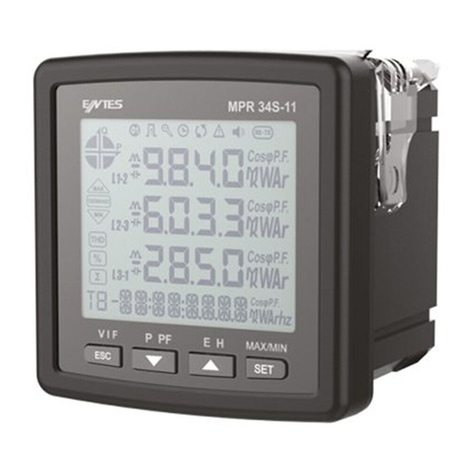
Entes
Entes MPR-32 User manual
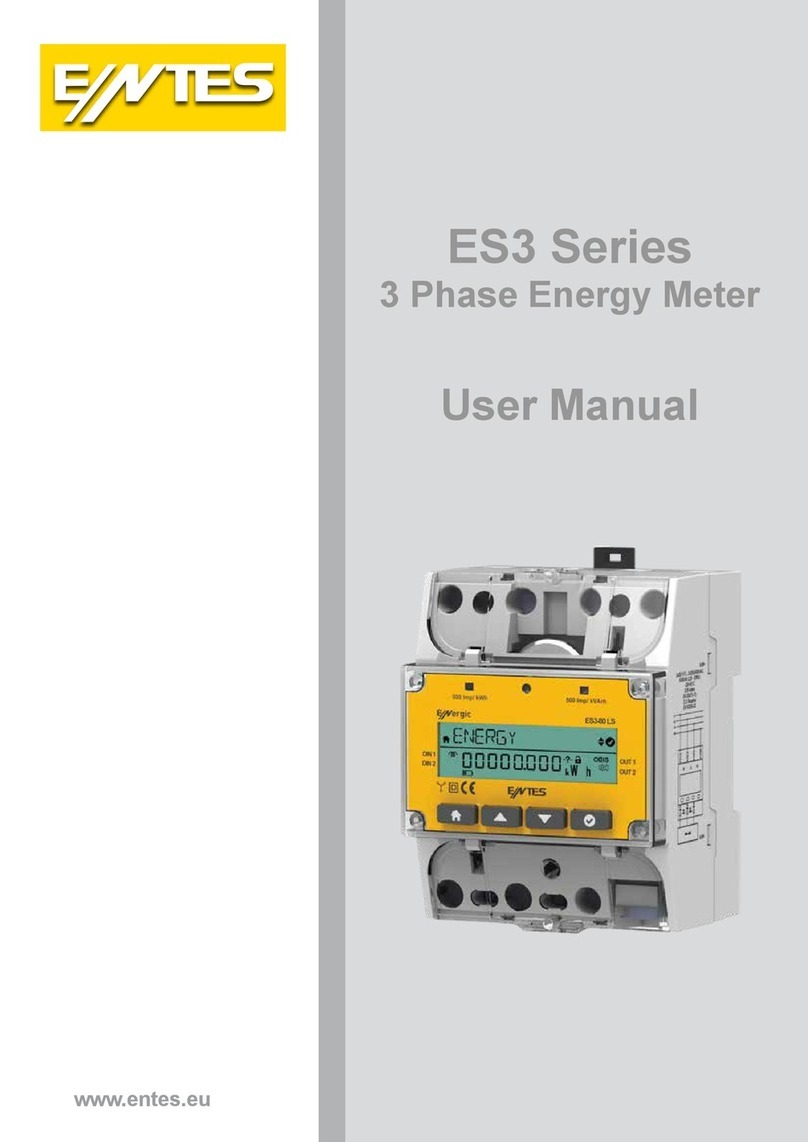
Entes
Entes ES3 Series User manual

Entes
Entes MPR-4 Series User manual
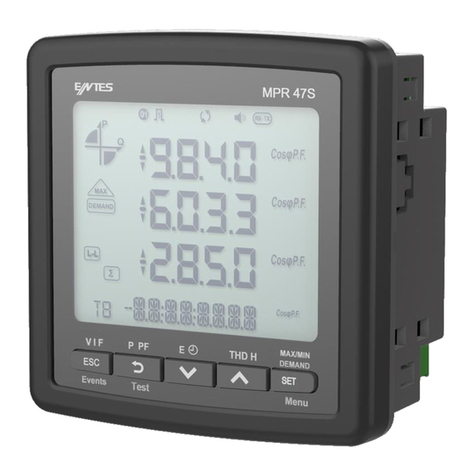
Entes
Entes MPR-45 User manual
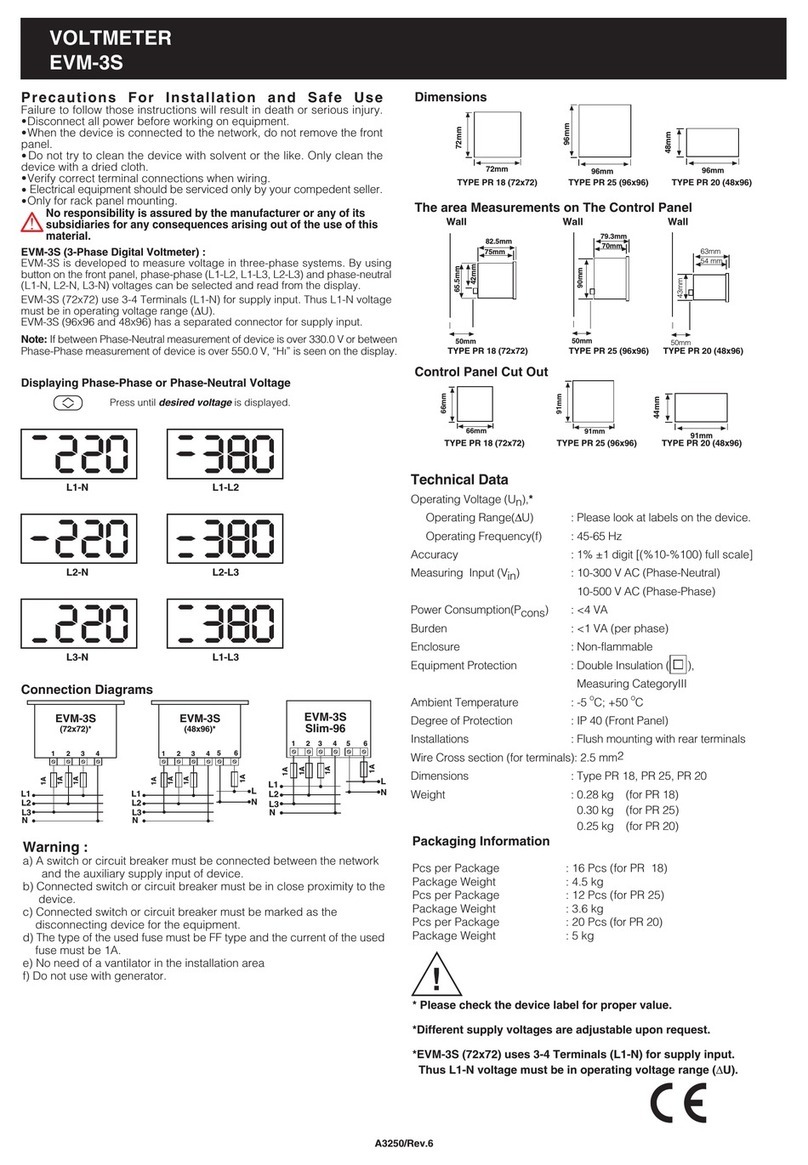
Entes
Entes EVM-3S User manual
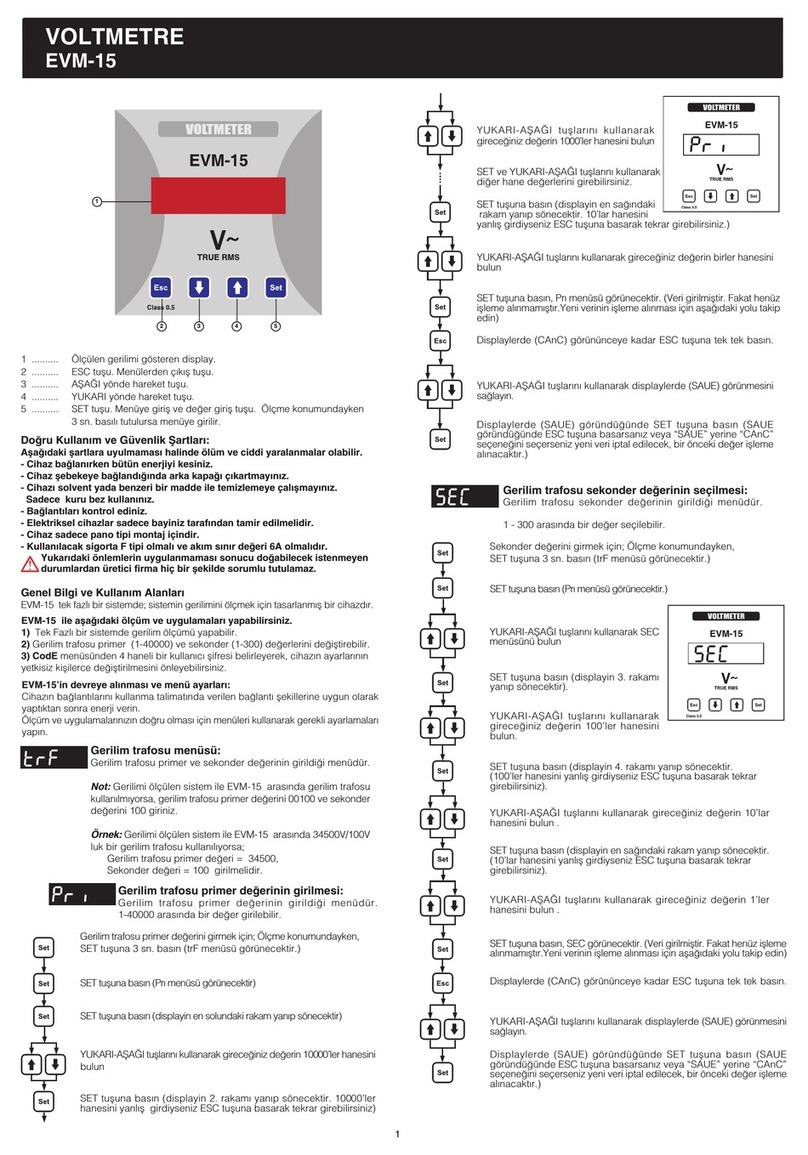
Entes
Entes EVM-15 User manual
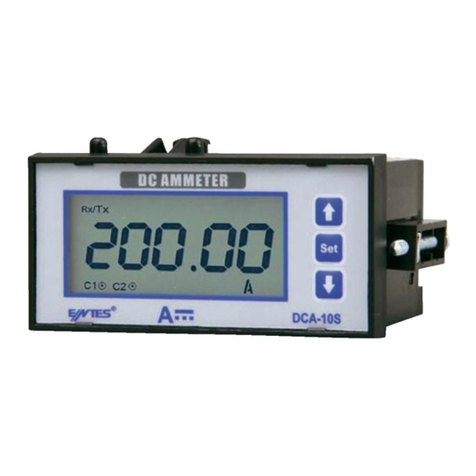
Entes
Entes DCA-10 User manual
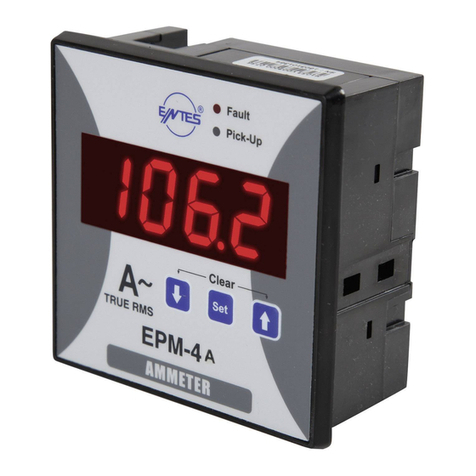
Entes
Entes EPM-4A User manual
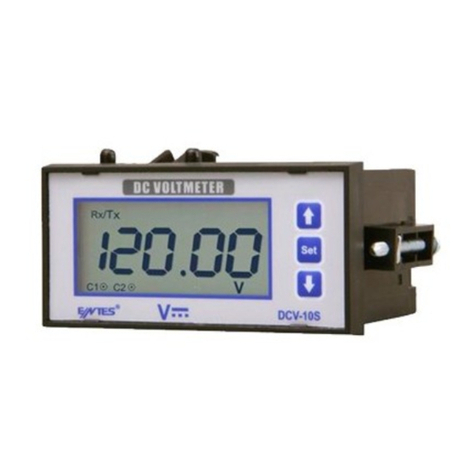
Entes
Entes DCV-10 User manual
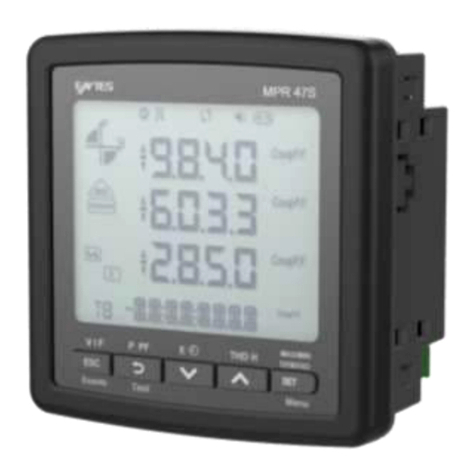
Entes
Entes MPR-4 Series User manual
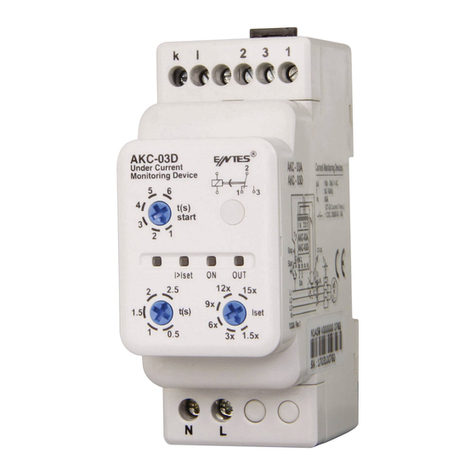
Entes
Entes AKC Series User manual
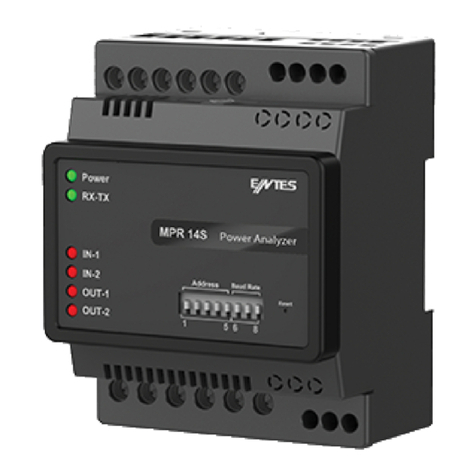
Entes
Entes MPR-1 Series User manual

Entes
Entes MPR-53S User manual
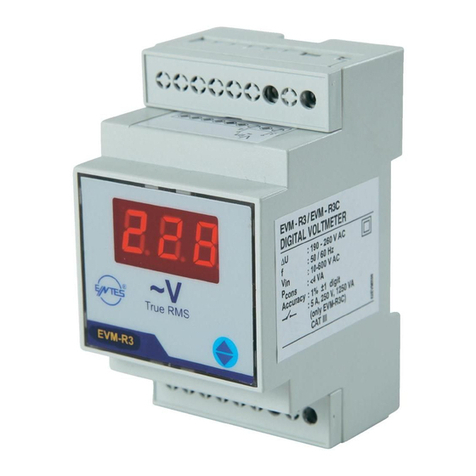
Entes
Entes EVM-R3 User manual
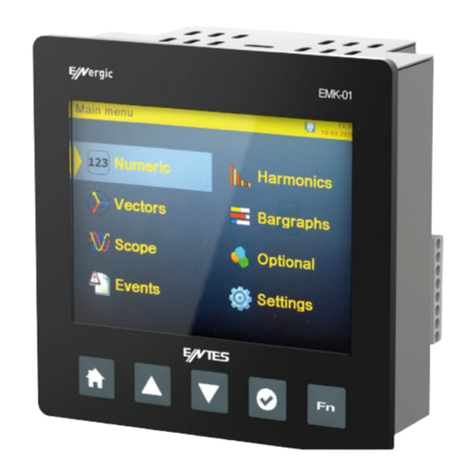
Entes
Entes EMK-01 User manual
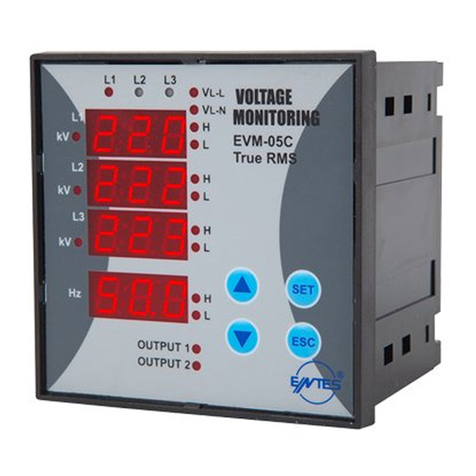
Entes
Entes EVM-05C User manual
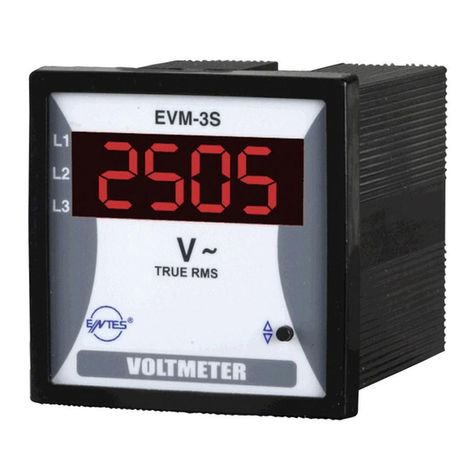
Entes
Entes EVM-3 Instruction manual
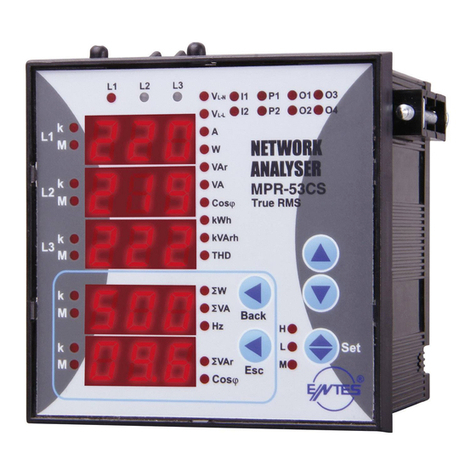
Entes
Entes MPR-53CS User manual
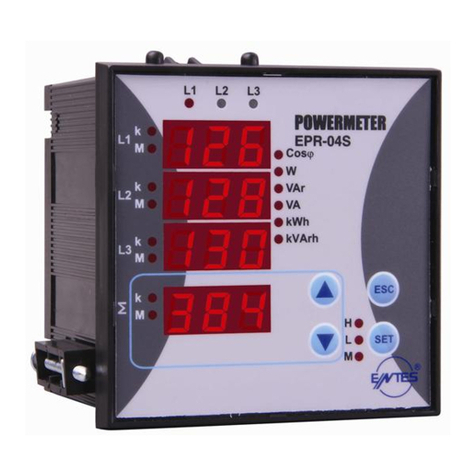
Entes
Entes EPR-04 Instruction manual

Entes
Entes EVM-R3 User manual



